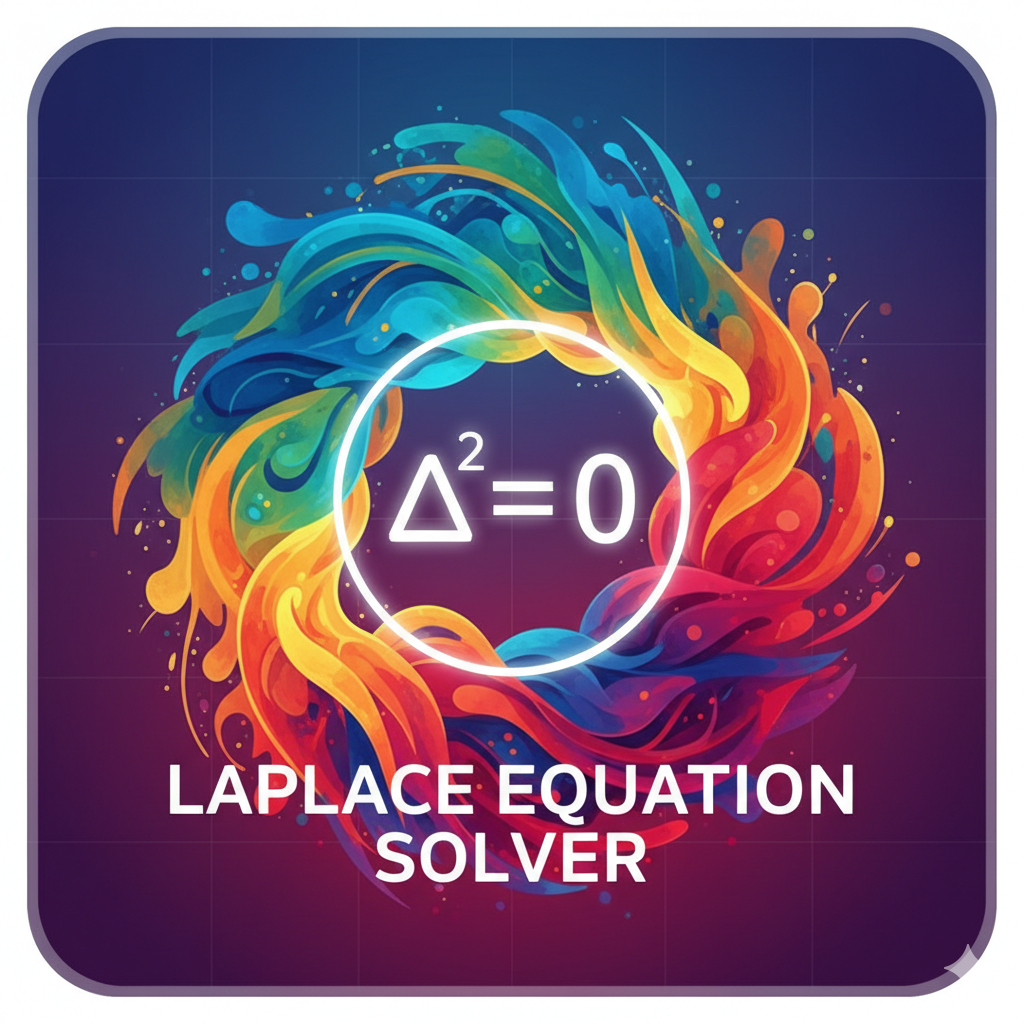Eigenvalue Finder
Calculate eigenvalues and eigenvectors of matrices quickly and easily with our free online Eigenvalue Finder tool. Solve for eigenvalues now!
The Eigenvalue Finder Tool ✨🧮 is a powerful and intuitive linear algebra calculator that allows you to calculate eigenvalues and eigenvectors of any square matrix — from simple 2×2 systems to complex 10×10 matrices.
Whether you’re analyzing vibrations in mechanical systems, principal components in data science, or stability in control theory, this tool provides instant, step-by-step solutions with clear mathematical reasoning and geometric interpretation.
Perfect for students, engineers, researchers, and data scientists, the tool simplifies the most abstract part of linear algebra into interactive, visual, and precise results.
⚙️ Key Features:
-
🧮 Instant Eigenvalue Calculation:
Solves the characteristic polynomial equation to find all eigenvalues (λ):det(A – λI) = 0where A = matrix and I = identity matrix.
-
🔢 Finds Both Eigenvalues & Eigenvectors:
For each eigenvalue λ, it solves(A – λI)v = 0to determine the corresponding eigenvector v.
-
📊 Step-by-Step Breakdown:
Displays every step, including:-
Formation of (A – λI)
-
Determinant expansion
-
Polynomial simplification
-
Eigenvalue roots
-
Substitution for eigenvectors
✅ Example:
A = | 2 1 | | 1 2 | Step 1: det(A – λI) = (2–λ)(2–λ) – 1 = λ² – 4λ + 3 = 0 Step 2: λ₁ = 3, λ₂ = 1 Step 3: For λ₁ = 3 → (A – 3I)v = 0 ⇒ v₁ = (1, 1) For λ₂ = 1 → (A – I)v = 0 ⇒ v₂ = (1, –1) ✅ Result: Eigenvalues = [3, 1] Eigenvectors = [(1, 1), (1, –1)] -
-
🧠 Geometric Interpretation:
Shows how each eigenvector represents a direction that remains unchanged by the matrix transformation, only scaled by its eigenvalue λ. -
📈 Visual Mode:
Optional 2D/3D visualization for 2×2 and 3×3 matrices, displaying:-
Transformation of basis vectors
-
Direction of eigenvectors
-
Stretch or compression factors
-
-
⚡ Multiple Calculation Methods:
Choose between:-
Analytical mode (exact symbolic results)
-
Numeric mode (for decimal or approximate eigenvalues)
-
Iterative power method (for large matrices)
-
-
🔢 Matrix Size Flexibility:
Supports square matrices up to 10×10, with clear display formatting. -
🧾 Matrix Property Insights:
Automatically displays matrix properties:-
Determinant
-
Trace (sum of diagonal entries)
-
Eigenvalue relationships (Σλ = Trace, Πλ = det(A))
-
-
🧩 Normalization Option:
Normalize eigenvectors to unit length for use in physics or data transformations. -
📱 Responsive & Fast:
Designed for mobile, tablet, and desktop — smooth input and live updates. -
🔒 Offline & Private:
No uploads, no tracking — all computations are processed locally.
💡 How It Works (Simplified):
Eigenvalues (λ) and eigenvectors (v) satisfy the equation:
A × v = λ × v
They represent directions and scaling factors in which a linear transformation acts by pure stretching or compressing, without rotation.
The eigenvalue equation is derived by ensuring non-trivial solutions:
det(A – λI) = 0
Solving this characteristic polynomial gives λ₁, λ₂, ..., λₙ.
Each λ corresponds to an eigenvector found by substituting back into (A – λI)v = 0.
📘 Example Calculations:
Example 1️⃣ – 2×2 Symmetric Matrix
A = | 2 1 | | 1 2 | det(A – λI) = (2–λ)² – 1 = λ² – 4λ + 3 λ₁ = 3, λ₂ = 1 Eigenvectors: λ₁ = 3 → v = [1, 1] λ₂ = 1 → v = [1, –1] ✅ Result: Eigenvalues = [3, 1], Eigenvectors = [(1,1), (1,–1)]
Example 2️⃣ – 3×3 Matrix
A = | 1 0 0 | | 0 2 0 | | 0 0 3 | Characteristic Equation: (1–λ)(2–λ)(3–λ) = 0 ✅ Eigenvalues: [1, 2, 3] ✅ Eigenvectors: [1, 0, 0], [0, 1, 0], [0, 0, 1]
Example 3️⃣ – Non-Symmetric Matrix
A = | 0 1 | | –2 –3 | det(A – λI) = λ² + 3λ + 2 = 0 λ₁ = –1, λ₂ = –2 ✅ Eigenvectors found by substitution: v₁ = [1, –1], v₂ = [1, –2]
🧭 Perfect For:
-
🎓 Students: Learn how matrices transform vectors geometrically.
-
⚙️ Engineers: Analyze vibrations, modes, and system stability.
-
💻 Data Scientists: Perform PCA (Principal Component Analysis).
-
🧠 Mathematicians: Explore linear operators and diagonalization.
-
🧾 Researchers: Simplify eigenvalue-based modeling and simulations.
🔍 Why It’s Valuable:
The Eigenvalue Finder Tool makes one of linear algebra’s most powerful concepts accessible, visual, and intuitive.
It helps users:
✅ Find exact or approximate eigenvalues quickly.
✅ Understand matrix transformations geometrically.
✅ Visualize scaling directions and invariant axes.
✅ Study diagonalization, matrix rank, and invertibility.
✅ Build deeper intuition for data and mechanical systems.
It’s your digital eigenvalue lab — combining accuracy, clarity, and interactivity.
🧩 Advanced Options (Optional):
-
🧮 Diagonalization Mode: Compute P⁻¹AP = D (where D is diagonal).
-
🔋 Power & QR Iteration: Estimate dominant eigenvalues for large matrices.
-
📈 Trace-Determinant Plot: Visualize eigenvalue relationship for 2×2 systems.
-
🧾 Matrix Decomposition Mode: Show spectral decomposition A = PDP⁻¹.
-
⚙️ Complex Eigenvalue Support: Handles complex λ and vectors automatically.
🌍 Common Use Cases:
| Field | Use Case | Matrix Type | Output |
|---|---|---|---|
| Mechanical Engineering | Vibrations & Modes | Real symmetric | Natural frequencies |
| Data Science | PCA, Covariance | Positive semidefinite | Principal components |
| Physics | Quantum Systems | Hermitian | Energy levels |
| Control Theory | System Stability | Dynamic system | Eigenvalues < 0 for stability |
| Computer Graphics | Transformation Matrices | Rotation/Scaling | Axis of scaling |
🧠 Scientific Insight:
Eigenvalues and eigenvectors describe the core structure of linear transformations.
-
The eigenvalue tells how much a vector is stretched or compressed.
-
The eigenvector tells which direction remains unchanged.
-
Together, they reveal fundamental system behaviors in mechanics, statistics, and geometry.
In linear algebra, diagonalizing a matrix using its eigenvalues simplifies complex problems like matrix exponentiation, vibration analysis, and machine learning transformations.
✨ In Short:
The Eigenvalue Finder Tool 🧠⚙️ turns complex matrix theory into clear, actionable understanding.
It gives you both the mathematical precision and visual clarity to master eigenvalue analysis — from classroom to real-world applications.
Calculate. Visualize. Understand.
With the Eigenvalue Finder, matrix transformations become simple, visual, and powerful. 📈🔢💡






